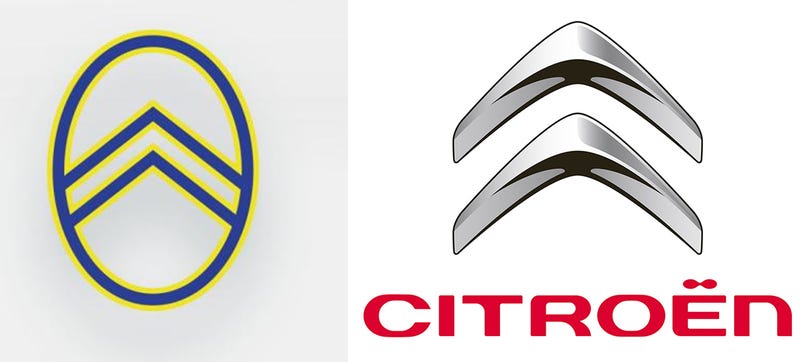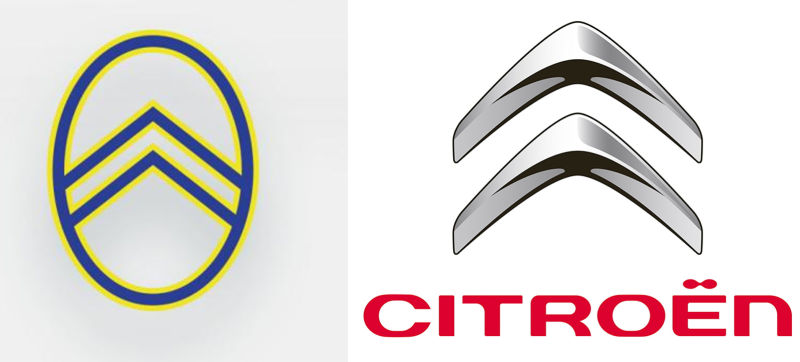
What does it symbolize? Pine trees? The pyramids? Birthday hats? Traffic cones? Mountains? A military insignia? Even though French automaker Citroën left the United States in the 1970s, it’s a company with a history as fascinating and bizarre as some of its cars—and the origin story behind its double chevron logo is actually very closely tied to its founder’s first claim to fame.
But, to get to the logo, we actually have to go back further, before Citroën was a company and was still just a man.
André Citroën was born in Paris on Feb. 5, 1878, to Jewish parents from Poland and the Netherlands. The family name was originally “Citroen,” which is Dutch for “lemon” because they were once in the business of selling fruit.
Advertisement
Advertisement
The diaeresis (which sounds like diarrhea but actually means the little dots above the “e”) was added to the name once the family moved to France, according to Citroënët, which is a fabulously in-depth and nerdy fan site.
After graduating from the Ecole Polytechnique near Paris1900, Citroën was introduced to wooden double helical gears used for “water-driven machinery,” writes the Surrey Vintage Vehicle Society. These gears were quiet when they ran and were able to transmit huge loads without damaging the wood they were made out of.
As Ralph Stein writes in The World Of The Automobile, Citroën then bought the rights to the invention of the herringbone gear from a relative in Poland and began manufacturing them in Paris out of steel.
Sponsored
And, naturally, he named them after himself, according to the American Machinistin 1913:
While others might have called them of the herringbone type, [Citroën] has so persistently named them “[Citroën]” gears that the name has been accepted as part of the language in the countries using them.
A herringbone gear (also called a double helical gear) is part of a set of gears that is designed to transmit power through parallel or perpendicular axes. This, in particular, is important because it allows for power to be transferred from shafts that aren’t parallel to each other.Herringbone gears have unique, V-shaped tooth structures which are engaged during rotation and also happen to look very cool.
Advertisement
Before the herringbone was invented, turn-of-the-century gearboxes were loud, constantly whining and hard to engage. The herringbone gear did away with that, resulting in gearboxes that were quieter and more efficient. They are produced in mirrored pairs, according to Globalspec:
Their complex tooth profile makes them more expensive than most gear options. It is common to place two opposite-hand helical gears adjacently and mill a centered, flat groove; this does not affect their performance. Perpendicular herringbone gears are rare, but gained prominence in Citroën vehicles.
As W.F. Bradley noted in Vol. 46 of Automotive Industries, early Citroëns had final drives that used herringbone gears.
Additionally, the need for these gears spiked in the French automotive industry, according to Surrey Vintage Vehicle Society:
Advertisement
Advertisement
As the French automobile industry was very well advanced, the requirement for gears was high. Citroën began very quickly to comprehend the need to mass produce components in order to achieve low prices and fast deliveries. He therefore invested in latest up-to-date machinery and introduced flow control management processes. His gears found their way into most French cars and to such diverse avenues as the steering system for the ‘Titanic’ and to being evaluated for use by Rolls-Royce.
Here is an animation of herringbone gears in action.
When the first Citroën car appeared in 1919, André Citroën, of course, chose the double chevron as the company logo. Two of them, to represent the meshing gears.
Modern-day herringbone gears are cut on a Sykes generator, which looks like this:
Herringbone gears aren’t used in modern day gearboxes because they are hugely expensive to manufacture. However, they are used in a great number of industrial applications, including turbine plants, earth moving industries, surface mining, moveable bridges and lock and dam machinery.
Advertisement
The more you know!
















